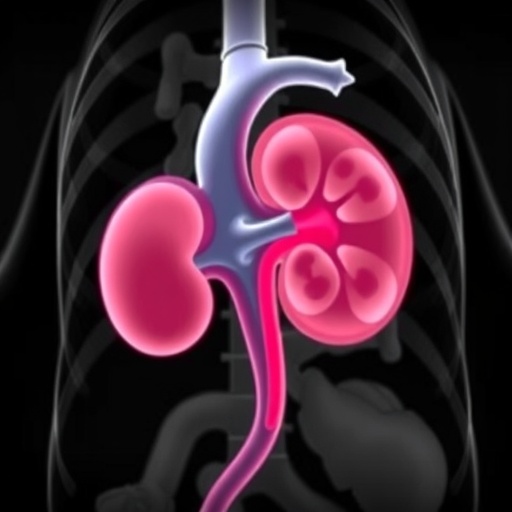Madrid, Spain, June 16, 2017: The results of a Swedish study presented today at the Annual European Congress of Rheumatology (EULAR) 2017 revealed an increasing incidence of hospitalisation due to gout over the last decade, with a resultant increase in health care costs. Also, worryingly, many of the patients admitted to hospital had not been receiving the recommended urate-lowering treatment (ULT).
A second study in the UK showed that nurse-provided patient education and support for a 'treat to target' management of gout resulted in a high uptake and excellent adherence to ULT over a 2-year period, with achievement of target serum uric acid (SUA) in more than 90% of cases, and consequent improvements in patient-centred outcomes and quality of life.
Increase in gout hospitalisation exacerbated by widespread failure to treat
From 2000 to 2012, the annual hospitalisation rate for gout in western Sweden increased from 12.2 to 16.7 per 100,000 adults (p=0.0038). This increase was most pronounced in males aged 65 and above, and over the last three years of the study. In addition, the length of hospitalisation increased from a median of 3 days to 5 days in 2000 and 2012 respectively (p=0.021).1
These findings are in marked contrast to the overall trend in hospitalisation across the Western Swedish Health Care Region (WSHCR). Over the same decade, the total amount of days for inpatient care due to physical conditions in WSHCR decreased by 9% from 2002 to 2012 (1,267,900 days, mean duration 5.7 days vs. 1,151,630 days, mean duration 4.9 days respectively).1
From 2009 to 2012, the inflation-adjusted health care costs for gout hospitalisations increased from USD 521,000 to USD 815,000. Only a minority of patients, 19 to 27%, received ULT in the 6 months preceding their hospitalisation, without any obvious cyclical or seasonal trend.1
"The incidence of hospitalisation for primary gout has increased substantially in Sweden over the last decade, and this is reflected in the associated health care costs," said lead author Dr. Mats Dehlin from Sahlgrenska Academy, University of Gothenburg, Sweden. "Although we would expect more hospitalisations due to the increasing incidence of gout among an aging population, the problem is being exacerbated by the fact that only one fourth of hospitalised patients were on the recommended ULT preceding their admission," he added.
Gout is the most common arthritic disease in the world, with an increasing incidence and prevalence. An increase in hospitalisation for gout has been shown over the last two decades in North America. "It is important to collect these data from different parts of the world as there will be variations in gout prevalence and the course of the disease, due to cultural, ethnic and genetic factors," Dr. Dehlin concluded.
Hospitalisation trends for gout were studied using data from the health care consumption register from 1st January 2001 through to 31st December 2012 in WSHCR, an area of the country believed to be representative of the whole of Sweden. Patients aged 18 years and older who were hospitalised during the study period with a principal ICD-10 diagnosis of gout at discharge were included.
Annual population rates for hospitalisation for gout were calculated. Inflation-adjusted health care costs for the gout hospitalisations were calculated using the Cost-Per-Patient register. Dispensation of ULT, including allopurinol and probenecid, within 6 months prior to hospitalisation, was identified using The Swedish Prescribed Drug Register.
In total, there were 1,873 hospitalisations for gout (mean age 75.0-77.6 years, 61-74% men) between 2000 and 2012. Demographic characteristics were similar over the study period.
Nurse-led management of gout following treat to target principles significantly improves patient outcomes compared to standard general practitioner care
To directly compare nurse-led care to standard general practitioner (GP) care of people with gout, 517 participants with acute gout in the previous year, identified from 56 local GP practices, were randomised to receive either one or the other type of care in a 2-year controlled trial.
After receiving full information about gout almost all participants in the nurse-led group wanted ULT. Comparing the nurse and GP groups at 2 years: 95% vs. 29% achieved a target serum uric acid (SUA)
In terms of the patients in the nurse and GP groups receiving treatment at 2 years, 97% vs. 54% were on ULT; with the mean (±SD) dose of allopurinol 470 (±140) vs. 240 (±107) mg/day respectively (again both measures p
The mean (±SD) gout attack frequency during the 2nd year was 0.33 (±0.93) in the nurse vs. 0.94 (±2.03) in the GP group (p
Although equivalent at baseline, there was a significantly better physical component score on the SF-36 health survey questionnaire among the nurse group at 2 years: mean (±SD) of 41.31 (±16.76) vs. 37.87 (±14.31); p
"Patients in the nurse-led group did significantly better in terms of achieving their target uric acid level and excellent adherence to ULT," said lead author Professor Michael Doherty from University of Nottingham, UK. "Our findings confirm the importance of patient education in successful management of gout and reinforce the benefits of a 'treat-to-target' strategy to achieve significant improvements in patient-centred outcomes, such as gout attack frequency, reduction in tophi and quality of life.. Compared to standard GP care, adopting additional nurse support is likely to be cost effective in the long-term and certainly merits further consideration," Professor Doherty concluded.
Despite increasing prevalence of gout in the UK, a variety of barriers result in suboptimal care with only 40% of gout patients receiving ULT, usually at a fixed dose without titration to an SUA target. , Nurses successfully manage many chronic diseases in the community, and a previous preliminary "proof-of-concept" study in Nottingham, UK had shown that, when people with gout are fully informed and involved in management decisions, uptake of ULT is high, and subsequent adherence at one year under nurse-led care is excellent. The current larger randomised controlled trial confirmed these findings over a two year period.
Nurses in the current study were trained about gout and its management according to recommended best practice (EULAR and BSR guidelines) including providing full information, addressing illness perceptions, and involving patients in management decisions. GP follow up was based on the usual standard of care. Assessments were undertaken at 1 and 2 years. Analysis was intention to treat (with the last observation carried forward). The nurse (n=255) and GP (n=262) patient groups were well matched at baseline for mean age (62 vs. 64 years), sex (90% vs. 89% men), mean disease duration (11.6 vs. 12.7 years), mean gout attack frequency in prior year (4.2 vs. 3.8), presence of tophi (13.7% vs. 8.8%), mean serum uric acid (443 vs. 439 μmol/L), mean eGFR (71.5 v. 70.2) and use of ULT (40% v. 39%) (all p>0.05).
After 2 years, 22 (8.6%) compared to 54 (20.6%) of the participants had discontinued attending the nurse and GP groups (p
###
What is gout?
Gout results from urate crystal deposition in and around joints due to persistent elevation of uric acid levels above a critical level (the "saturation point"). It is characterised clinically by recurrent attacks of acute inflammatory arthritis, irreversible joint damage, and increased risk of cardiovascular disease, chronic kidney disease and shortened life expectancy. It is the most common inflammatory joint disease world-wide with a standardised population prevalence of around 1-4% of the Western population. It is the only "curable" chronic arthritis, in that the pathogenic agents (urate crystals) can by effectively removed by use of ULT, supported by lifestyle modifications to reduce modifiable risk factors (e.g. weight loss if overweight or obese, reduction in excess dietary purines/fructose/alcohol, and alteration in antihypertensive and other drug treatments that elevate uric acid levels etc.).
Abstract Number: OP0262 and OP026
NOTES TO EDITORS:
For further information on this study, or to request an interview with the study lead, please do not hesitate to contact the EULAR congress Press Office in the Goya Room at the IFEMA, Madrid during EULAR 2017 or on:
Email: [email protected]
Onsite tel: +44 (0)7786 171 476 / +34 91722 3115
Twitter: @EULAR_Press
Youtube: Eular Press Office
About Rheumatic and Musculoskeletal Diseases
Rheumatic and musculoskeletal diseases (RMDs) are a diverse group of diseases that commonly affect the joints, but can also affect the muscles, other tissues and internal organs. There are more than 200 different RMDs, affecting both children and adults. They are usually caused by problems of the immune system, inflammation, infections or gradual deterioration of joints, muscle and bones. Many of these diseases are long term and worsen over time. They are typically painful and Iimit function. In severe cases, RMDs can result in significant disability, having a major impact on both quality of life and life expectancy.
About 'Don't Delay, Connect Today!'
'Don't Delay, Connect Today!' is a EULAR initiative that unites the voices of its three pillars, patient (PARE) organisations, scientific member societies and health professional associations – as well as its international network – with the goal of highlighting the importance of early diagnosis and access to treatment. In Europe alone, over 120 million people are currently living with a rheumatic disease (RMD), with many cases undetected. The 'Don't Delay, Connect Today' campaign aims to highlight that early diagnosis of RMDs and access to treatment can prevent further damage, and also reduce the burden on individual life and society as a whole.
About EULAR
The European League Against Rheumatism (EULAR) is an umbrella organisation which represents scientific societies, health professional associations and organisations for people with rheumatic and musculoskeletal diseases throughout Europe. EULAR aims to reduce the burden of rheumatic and musculoskeletal diseases on individuals and society and to improve the treatment, prevention and rehabilitation of rheumatic and musculoskeletal diseases. To this end, EULAR fosters excellence in education and research in the field of rheumatology. It promotes the translation of research advances into daily care and fights for the recognition of the needs of people with musculoskeletal diseases by the governing bodies in Europe through advocacy action.
To find out more about the activities of EULAR, visit: http://www.eular.org
Media Contact
EULAR Press Office
[email protected]
34-917-223-115
@eular_org
http://www.eular.org
https://www.eular.org/congresspressreleases/Gout_hospitalisation_exacerbated_by_failure_to_prescribe_recommended_urate-lowering_treatment__OP0262_and_OP0268.pdf
############
Story Source: Materials provided by Scienmag




